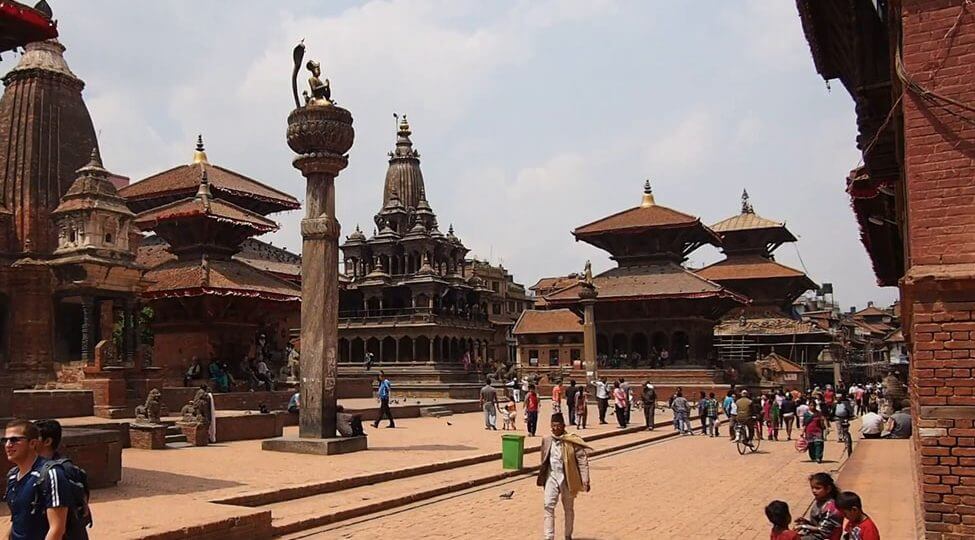

Kathmandu, Nepal's capital, is set in a valley surrounded by the Himalayan mountains. At the heart of the old city’s mazelike alleys is Durbar Square, which becomes frenetic during Indra Jatra, a religious festival featuring masked dances. Many of the city's historic sites were damaged or destroyed by a 2015 earthquake. Durbar Square's palace, Hanuman Dhoka, and Kasthamandap, a wooden Hindu temple, are being rebuilt.
Founded in a vast valley after draining a large lake, legends abound in this remarkable city and every street has a shrine or two. Kathmandu is an incredibly diverse, historic city with amazing architecture, exquisite wood carvings and metal craft which showcase the skills of the Newar artisans of centuries ago. Hinduism and Buddhism have co-existed in Kathmandu valley from time immemorial and the valley residents make little distinction as they worship in both Hindu and Buddhist shrines.
Kathmandu is a city where ancient traditions are zealously guarded while at the same time embracing modern technology. The grandeur of the past enchants the visitor whose gaze may linger on an exquisitely carved wooden window frame, an 18th century bronze sculpture or a spiritually uplifting stupa. Kathmandu, the largest city of Nepal, is the political as well as cultural capital of the country, where Nepalis have arrived from all corners of the country and assimilated.
Like any big city, Kathmandu has seen rapid expansion in the last decade, but despite the fast life of a metropolis, its people remain refreshingly friendly towards visitors. Retaining its ancient traditions, Kathmandu is blessed by the Living Goddess Kumari, a little Buddhist girl who represents the powerful Hindu Goddess Taleju. City life is enriched by endless ceremonial processions and events that take to the streets every now and then, with throngs of devotees seeking joy in spiritual celebrations. These religious festivals are steeped in legend and are quite a spectacle with chariot processions and masked dancers often possessed by the spirits of deities.
The Durbar (palace) Square, a UNESCO World Heritage Site lies in the heart of the city with the old palace accompanied by a number of pagoda style temples that boast of superb craftsmanship in wood and metal. The Living Goddess’ residence lies nearby and the famous Freak Street is a stone’s throw away. Today tourists prefer Thamel which has grown into a thriving tourist quarter, offering everything from luxury to cheap hotels, bars and eateries to travel agencies, money exchange centres, massage parlours, night clubs, live music, yoga and meditation classes and more. International cuisine of every kind from Korean to Italian, Chinese, Japanese, Thai, Indian to Mexican and more are available within a square kilometre.
Pashupatinath, Boudha and Swayambhu, three of the prominent religious pilgrimage sites are World Heritage Sites and a must see. These centuries-old places of worship, the countless smaller shrines and numerous festivals make Kathmandu a living museum, an opportunity to travel back in time while also enjoying all the trappings of the 21st Century.